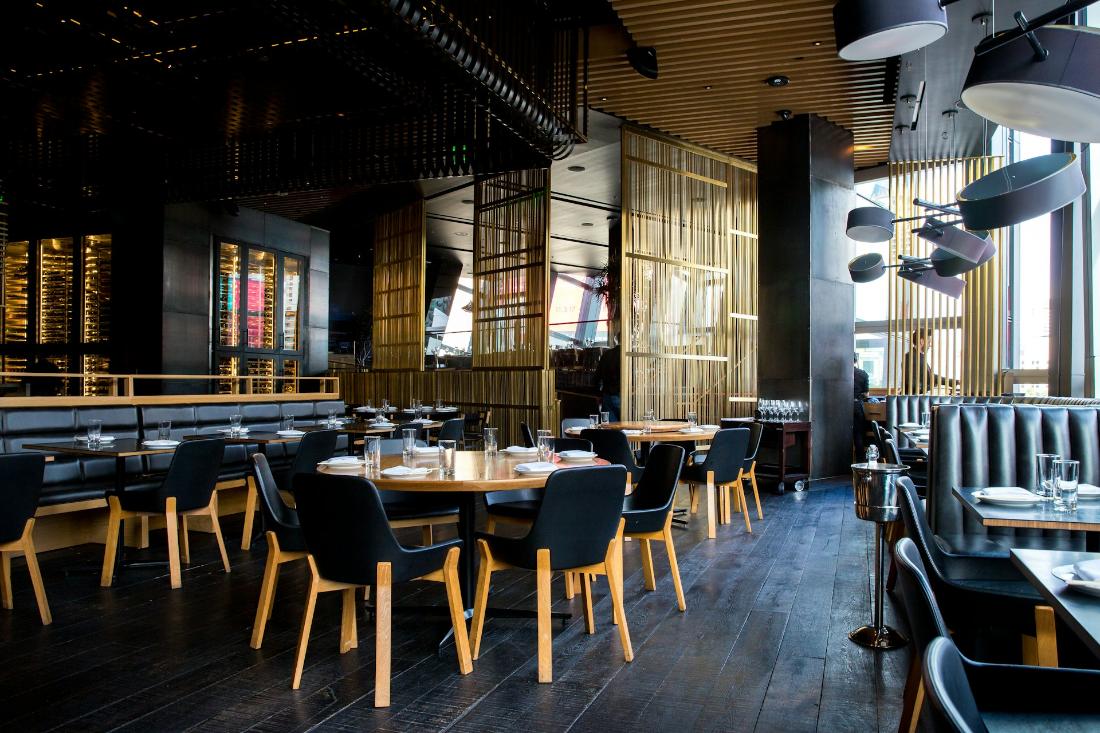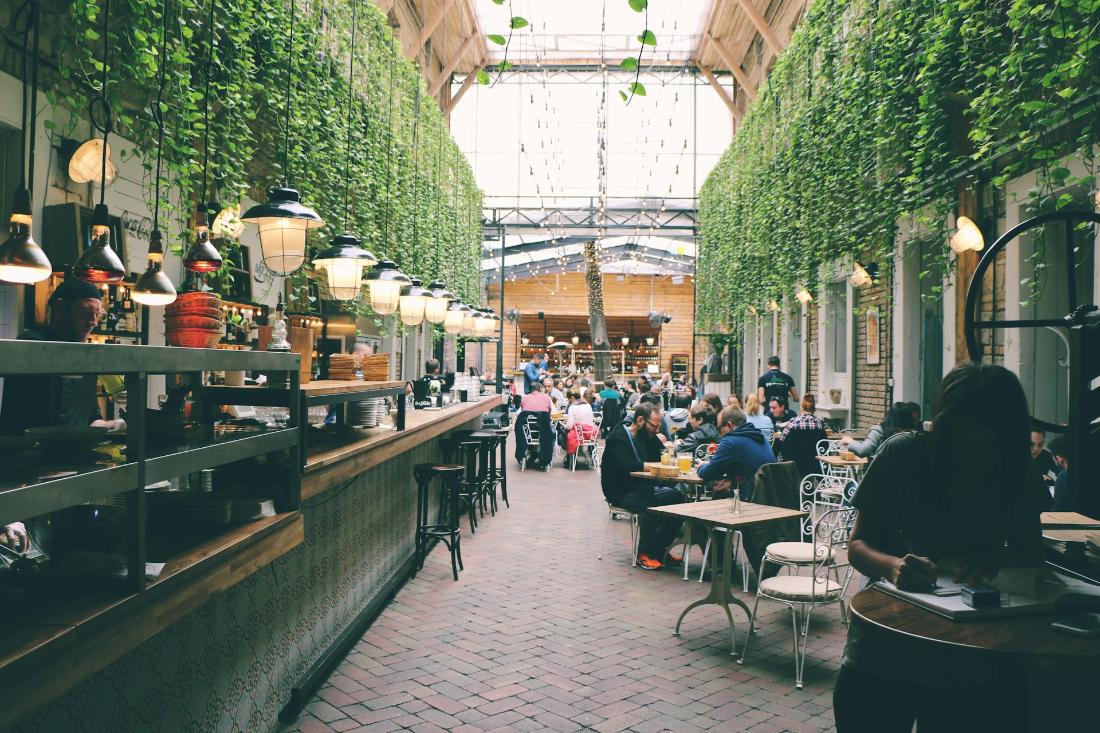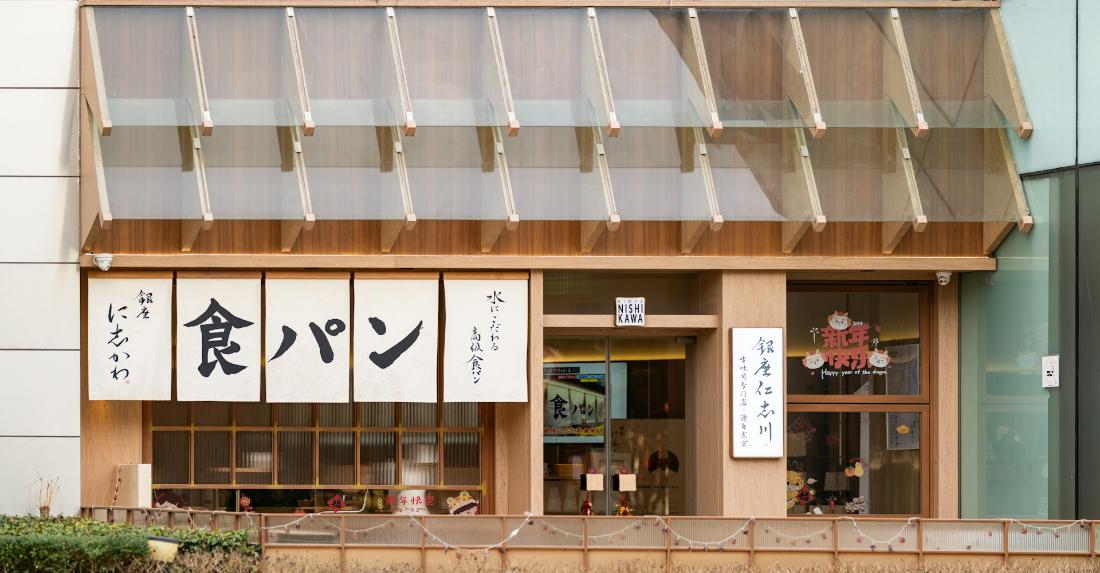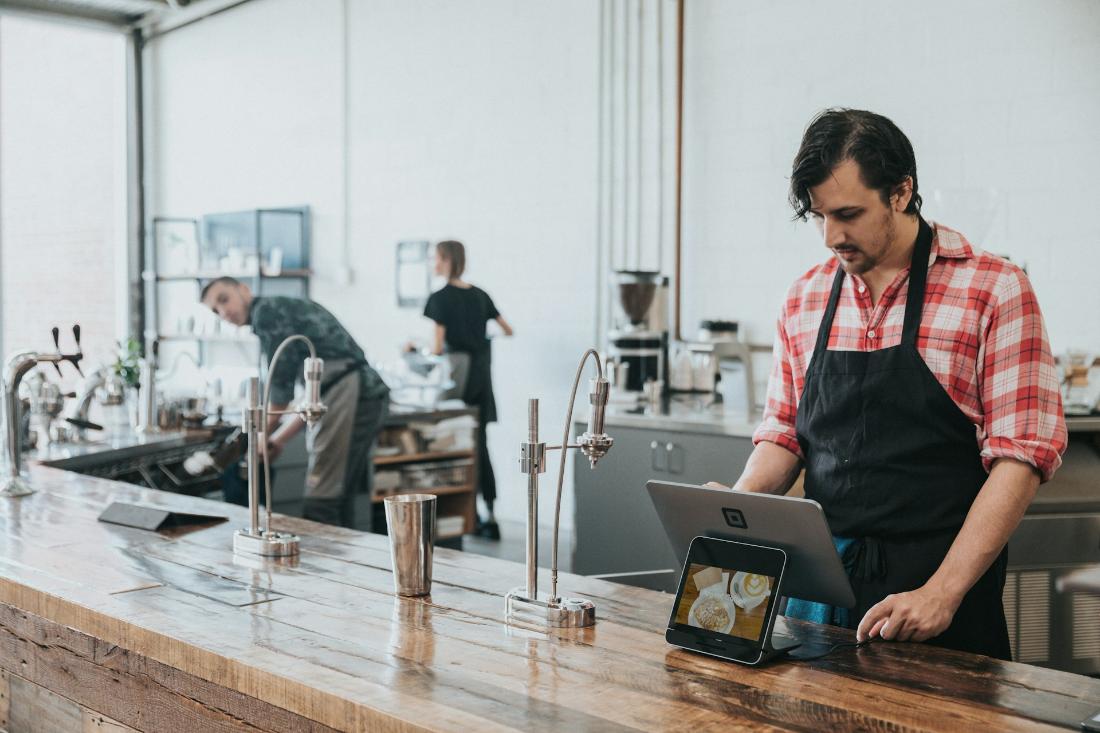Structure
Restaurant Design and Build Contractor in Malaysia: Crafting Culinary Experiences Through Design
Oct 17 2025
The scent of fresh sawdust mingles with the aroma of brewing coffee as the morning light filters through unfinished windows. I'm standing in what will soon become one of Kuala Lumpur's most anticipated new restaurants, watching as the project director points out how the curve of the bar will guide guests naturally toward the dining area. "We're not just building restaurants," he explains, his hands tracing imaginary sightlines through the space. "We're creating stages where Malaysian culinary stories unfold." In that moment, I understand that restaurant design and build contractors in Malaysia serve as crucial interpreters, translating culinary visions into physical spaces that engage all the senses while navigating the complex realities of food service operations in our unique environment.
In Malaysia's vibrant and competitive food and beverage landscape, restaurant design has evolved from mere decoration to a strategic business tool. The successful Malaysian restaurant must balance authentic cultural expression with international sophistication, operational efficiency with atmospheric magic, and traditional warmth with contemporary cool. This article explores the intricate world of restaurant design and construction in Malaysia, the specialized knowledge required to create dining spaces that captivate customers while functioning flawlessly behind the scenes, and how to identify partners who can deliver not just beautiful spaces, but profitable operations.
The Malaysian Dining Revolution: Designing for Diversity and Distinction
Malaysia's rich culinary heritage presents both an incredible opportunity and a unique challenge for restaurant designers. The modern Malaysian dining scene must honor traditional food cultures while embracing contemporary dining expectations. I've consulted on projects where designers created spaces that feel simultaneously nostalgic and innovative—incorporating traditional architectural elements like "jendela jalusi" (lattice windows) in modern ways, using local materials like chengal wood and terracotta in contemporary applications, and creating atmospheres that respect Malaysian dining traditions while feeling fresh and exciting. A design principal with restaurants across Southeast Asia explained how successful Malaysian designs speak both to local customers seeking comfort and international visitors seeking authenticity.
The tropical climate fundamentally shapes every aspect of restaurant design in Malaysia. The heat and humidity influence everything from material selection to ventilation strategies, while the intense sunlight demands careful consideration of window placements and shading solutions. The most knowledgeable designers understand how to work with Malaysia's climate rather than against it, creating environments that feel cool and comfortable while minimizing energy consumption. A sustainability specialist showed me how strategic cross-ventilation, green walls, and reflective materials can reduce air conditioning costs by up to forty percent while creating more pleasant dining environments.
The diversity of Malaysia's culinary offerings demands equally diverse design approaches. A mamak restaurant requires different considerations than a fine dining establishment, a kopitiam differs from a specialty coffee shop, and a hawker stall transformation demands different solutions than a luxury hotel restaurant. Experienced contractors understand these nuances and know how to create spaces that enhance rather than fight against the culinary concept. A contractor specializing in heritage F&B projects demonstrated how they research historical design elements and traditional building techniques to create spaces that feel authentic to their culinary purpose.
In Malaysia's vibrant and competitive food and beverage landscape, restaurant design has evolved from mere decoration to a strategic business tool. The successful Malaysian restaurant must balance authentic cultural expression with international sophistication, operational efficiency with atmospheric magic, and traditional warmth with contemporary cool. This article explores the intricate world of restaurant design and construction in Malaysia, the specialized knowledge required to create dining spaces that captivate customers while functioning flawlessly behind the scenes, and how to identify partners who can deliver not just beautiful spaces, but profitable operations.
The Malaysian Dining Revolution: Designing for Diversity and Distinction
Malaysia's rich culinary heritage presents both an incredible opportunity and a unique challenge for restaurant designers. The modern Malaysian dining scene must honor traditional food cultures while embracing contemporary dining expectations. I've consulted on projects where designers created spaces that feel simultaneously nostalgic and innovative—incorporating traditional architectural elements like "jendela jalusi" (lattice windows) in modern ways, using local materials like chengal wood and terracotta in contemporary applications, and creating atmospheres that respect Malaysian dining traditions while feeling fresh and exciting. A design principal with restaurants across Southeast Asia explained how successful Malaysian designs speak both to local customers seeking comfort and international visitors seeking authenticity.
The tropical climate fundamentally shapes every aspect of restaurant design in Malaysia. The heat and humidity influence everything from material selection to ventilation strategies, while the intense sunlight demands careful consideration of window placements and shading solutions. The most knowledgeable designers understand how to work with Malaysia's climate rather than against it, creating environments that feel cool and comfortable while minimizing energy consumption. A sustainability specialist showed me how strategic cross-ventilation, green walls, and reflective materials can reduce air conditioning costs by up to forty percent while creating more pleasant dining environments.
The diversity of Malaysia's culinary offerings demands equally diverse design approaches. A mamak restaurant requires different considerations than a fine dining establishment, a kopitiam differs from a specialty coffee shop, and a hawker stall transformation demands different solutions than a luxury hotel restaurant. Experienced contractors understand these nuances and know how to create spaces that enhance rather than fight against the culinary concept. A contractor specializing in heritage F&B projects demonstrated how they research historical design elements and traditional building techniques to create spaces that feel authentic to their culinary purpose.
Understanding the Restaurant Design-Build Process
The journey from culinary concept to operational restaurant involves multiple specialized phases that must be perfectly coordinated.
Concept Development and Brand Translation forms the crucial foundation of any successful restaurant project. Before any design begins, experienced contractors invest time understanding the culinary vision, target market, and operational requirements. They study the menu concept, service style, and desired customer experience to ensure the design supports the business objectives. This deep understanding enables them to create spaces that not only look appropriate but function optimally for their specific purpose. I watched a design team spend days with a chef-owner, understanding not just their recipes but their cooking philosophy, before developing a kitchen layout that became an extension of their culinary expression.
Space Planning and Operational Flow determines how both customers and staff move through and experience the restaurant. The best designers understand the subtle choreography of restaurant operations—how table layouts affect service efficiency, how kitchen design impacts food quality, and how circulation patterns can either create energy or cause congestion. Their plans balance front-of-house customer experience with back-of-house operational needs, creating seamless flows that feel effortless to guests while maximizing efficiency for staff. A designer specializing in high-volume restaurants showed me how careful space planning increased table turnover by twenty-five percent while actually improving guest satisfaction scores.
Kitchen Design and Technical Integration represents one of the most specialized aspects of restaurant construction. Unlike other building types, restaurants require complex mechanical, electrical, and plumbing systems tailored to food service operations. Knowledgeable contractors understand hood ventilation requirements, grease trap specifications, gas line safety, and the unique power demands of commercial kitchen equipment. Their technical teams coordinate with equipment suppliers to ensure all systems work together seamlessly. An executive chef credited his design-build team's understanding of kitchen workflow with creating a space where his team could perform at their best from opening day.
Material Selection and Durability Considerations must balance aesthetics with practical performance in the demanding restaurant environment. Materials need to withstand heavy use, frequent cleaning, heat, moisture, and constant wear while maintaining their appearance and creating the desired atmosphere. Experienced contractors maintain relationships with suppliers who understand these requirements, sourcing materials that combine beauty, durability, and appropriate maintenance characteristics. A project manager explained how they've developed a curated selection of materials specifically tested for performance in Malaysian restaurant conditions—from grease-resistant flooring to humidity-tolerant finishes.
The journey from culinary concept to operational restaurant involves multiple specialized phases that must be perfectly coordinated.
Concept Development and Brand Translation forms the crucial foundation of any successful restaurant project. Before any design begins, experienced contractors invest time understanding the culinary vision, target market, and operational requirements. They study the menu concept, service style, and desired customer experience to ensure the design supports the business objectives. This deep understanding enables them to create spaces that not only look appropriate but function optimally for their specific purpose. I watched a design team spend days with a chef-owner, understanding not just their recipes but their cooking philosophy, before developing a kitchen layout that became an extension of their culinary expression.
Space Planning and Operational Flow determines how both customers and staff move through and experience the restaurant. The best designers understand the subtle choreography of restaurant operations—how table layouts affect service efficiency, how kitchen design impacts food quality, and how circulation patterns can either create energy or cause congestion. Their plans balance front-of-house customer experience with back-of-house operational needs, creating seamless flows that feel effortless to guests while maximizing efficiency for staff. A designer specializing in high-volume restaurants showed me how careful space planning increased table turnover by twenty-five percent while actually improving guest satisfaction scores.
Kitchen Design and Technical Integration represents one of the most specialized aspects of restaurant construction. Unlike other building types, restaurants require complex mechanical, electrical, and plumbing systems tailored to food service operations. Knowledgeable contractors understand hood ventilation requirements, grease trap specifications, gas line safety, and the unique power demands of commercial kitchen equipment. Their technical teams coordinate with equipment suppliers to ensure all systems work together seamlessly. An executive chef credited his design-build team's understanding of kitchen workflow with creating a space where his team could perform at their best from opening day.
Material Selection and Durability Considerations must balance aesthetics with practical performance in the demanding restaurant environment. Materials need to withstand heavy use, frequent cleaning, heat, moisture, and constant wear while maintaining their appearance and creating the desired atmosphere. Experienced contractors maintain relationships with suppliers who understand these requirements, sourcing materials that combine beauty, durability, and appropriate maintenance characteristics. A project manager explained how they've developed a curated selection of materials specifically tested for performance in Malaysian restaurant conditions—from grease-resistant flooring to humidity-tolerant finishes.
What Separates Exceptional Restaurant Contractors
The difference between adequate restaurant construction and exceptional dining environment creation becomes apparent in both the guest experience and the operational performance. Through evaluating numerous restaurant projects across Malaysia, several key differentiators emerge among top-tier contractors.
Operational Understanding and Kitchen Expertise enables contractors to create spaces that work as hard as they look. The best design teams include members with actual restaurant operations experience who understand how kitchen workflow, service patterns, and customer flow impact profitability. They think like operators, designing spaces that minimize staff steps, maximize table capacity, and ensure smooth service during peak periods. This operational focus proved crucial when a design team reconfigured a restaurant's service station locations, reducing staff travel distance by thirty percent and significantly improving service speed.
Technical Mastery and Systems Integration ensures that all the complex systems required in a modern restaurant work together seamlessly. Exceptional contractors understand how to coordinate specialized requirements like commercial kitchen ventilation, gas systems, food safety compliance, and disability access while maintaining design integrity. Their technical teams solve complex challenges like integrating state-of-the-art kitchen equipment into heritage buildings or creating sophisticated lighting systems that enhance both ambiance and food presentation. A restaurant owner showed me how perfect integration of kitchen systems resulted in energy savings that paid for the premium equipment within eighteen months.
Local Authority Navigation and Compliance Management is particularly important in Malaysia's regulated food service environment. Quality contractors maintain current knowledge of requirements from multiple authorities including local councils, Bomba (Fire Department), and health departments. Their understanding of the approval process and relationships with relevant agencies can significantly streamline the path to operational status. A restaurant group operations director credited their contractor's comprehensive approach to regulatory compliance with achieving operating licenses in half the usual time.
Project Management and Timeline Adherence can mean the difference between opening during peak season or missing crucial revenue opportunities. The best contractors develop detailed schedules that coordinate complex sequences of work while maintaining flexibility to adapt to unexpected challenges. Their experience with similar projects allows them to anticipate potential bottlenecks and develop practical solutions. I witnessed impressive coordination during a hotel restaurant renovation where the contractor completed the project ahead of schedule despite supply chain disruptions, enabling the restaurant to capture valuable festive season business.
The difference between adequate restaurant construction and exceptional dining environment creation becomes apparent in both the guest experience and the operational performance. Through evaluating numerous restaurant projects across Malaysia, several key differentiators emerge among top-tier contractors.
Operational Understanding and Kitchen Expertise enables contractors to create spaces that work as hard as they look. The best design teams include members with actual restaurant operations experience who understand how kitchen workflow, service patterns, and customer flow impact profitability. They think like operators, designing spaces that minimize staff steps, maximize table capacity, and ensure smooth service during peak periods. This operational focus proved crucial when a design team reconfigured a restaurant's service station locations, reducing staff travel distance by thirty percent and significantly improving service speed.
Technical Mastery and Systems Integration ensures that all the complex systems required in a modern restaurant work together seamlessly. Exceptional contractors understand how to coordinate specialized requirements like commercial kitchen ventilation, gas systems, food safety compliance, and disability access while maintaining design integrity. Their technical teams solve complex challenges like integrating state-of-the-art kitchen equipment into heritage buildings or creating sophisticated lighting systems that enhance both ambiance and food presentation. A restaurant owner showed me how perfect integration of kitchen systems resulted in energy savings that paid for the premium equipment within eighteen months.
Local Authority Navigation and Compliance Management is particularly important in Malaysia's regulated food service environment. Quality contractors maintain current knowledge of requirements from multiple authorities including local councils, Bomba (Fire Department), and health departments. Their understanding of the approval process and relationships with relevant agencies can significantly streamline the path to operational status. A restaurant group operations director credited their contractor's comprehensive approach to regulatory compliance with achieving operating licenses in half the usual time.
Project Management and Timeline Adherence can mean the difference between opening during peak season or missing crucial revenue opportunities. The best contractors develop detailed schedules that coordinate complex sequences of work while maintaining flexibility to adapt to unexpected challenges. Their experience with similar projects allows them to anticipate potential bottlenecks and develop practical solutions. I witnessed impressive coordination during a hotel restaurant renovation where the contractor completed the project ahead of schedule despite supply chain disruptions, enabling the restaurant to capture valuable festive season business.
Emerging Trends in Malaysian Restaurant Design
The restaurant design industry continues to evolve with new approaches responding to changes in dining habits, technology, and customer expectations.
Experiential Dining and Multi-Sensory Design has moved from novelty to expectation. Modern restaurants incorporate elements that engage all the senses—custom scent profiles, tactile materials, curated soundscapes, and dynamic lighting that changes throughout service. The most innovative designs create immersive environments that tell stories and create memorable experiences beyond just the food. A design firm specializing in experiential dining showed me how they're using technology to create interactive elements that respond to guest movement and choices, making each visit unique.
Sustainable and Eco-Conscious Design addresses growing environmental awareness among Malaysian diners. From upcycled materials and energy-efficient equipment to waste reduction systems and local material sourcing, sustainable practices are becoming expected rather than exceptional. Progressive contractors have developed expertise in green restaurant operations and understand how to create spaces that minimize environmental impact while reducing operating costs. A sustainability consultant explained how their restaurant designs typically achieve both environmental certifications and measurable reductions in utility costs.
Flexible and Multi-Functional Spaces respond to the need for operational adaptability. Rather than designing fixed restaurants for single uses, contractors are creating convertible spaces that can accommodate different service modes throughout the day—from quick breakfast service to leisurely dinners, from private events to public dining. The most innovative designs include movable partitions, convertible furniture, and adaptable lighting systems that transform spaces for different occasions. A restaurant owner demonstrated how their flexible design allowed them to serve three distinct dayparts effectively, significantly increasing revenue per square foot.
Technology Integration and Digital Experience has become increasingly sophisticated in restaurant design. From app-based ordering and payment systems to kitchen display systems and customer relationship management integration, technology is becoming deeply embedded in the restaurant experience. Forward-thinking contractors understand how to create the infrastructure for these technologies while ensuring they enhance rather than complicate the guest experience. A technology integrator showed me how their systems provide restaurateurs with valuable data about space utilization and customer behavior, enabling continuous improvement.
Choosing Your Restaurant Design-Build Partner
Selecting the right restaurant design and build contractor requires careful evaluation of both creative vision and practical execution capabilities. Based on extensive hospitality consulting experience, here's what restaurateurs should consider:
Restaurant-Specific Experience and Portfolio should demonstrate successful projects similar to your concept in scale, style, and operational complexity. Review completed restaurants and speak with owners about how the spaces perform operationally. Pay particular attention to projects that have been operating successfully for several years—this demonstrates both design longevity and construction quality.
Understanding of Your Concept and Market enables them to create spaces that resonate with your target customers. The best contractors invest time in understanding your culinary vision, service philosophy, and business objectives before beginning design work. Their ability to ask insightful questions about your concept often reveals opportunities to create spaces that enhance your competitive advantage.
Technical Capabilities and Specialist Teams ensure they can handle the unique challenges of restaurant construction. Inquire about their experience with kitchen design, specialized systems, and regulatory requirements. Contractors with dedicated hospitality specialists typically deliver better results than those treating restaurants as conventional commercial projects.
Communication Approach and Cultural Fit determines how smoothly your working relationship will develop. Ensure their communication style matches your expectations and that you feel comfortable with their team. The restaurant development process involves countless decisions under time pressure—having a partner you trust and communicate well with makes the journey significantly more productive and less stressful.
Designing the Future of Malaysian Dining
Quality restaurant design and construction does more than create beautiful spaces—it shapes dining culture, enhances operational efficiency, and creates memorable experiences that keep customers returning. The right design-build contractor becomes a strategic partner in bringing culinary visions to life, providing not just construction services but valuable insights into customer behavior, operational efficiency, and market positioning that ensure restaurants succeed both creatively and commercially.
In a nation where food represents both cultural heritage and contemporary creativity, that partnership helps create dining environments that celebrate Malaysian culinary excellence while meeting evolving customer expectations. The best contractors understand that they're not just designing and building restaurants—they're creating the venues where Malaysian food culture evolves, where memories are made around shared meals, and where the nation's culinary future takes shape, one beautifully designed space at a time.
The restaurant design industry continues to evolve with new approaches responding to changes in dining habits, technology, and customer expectations.
Experiential Dining and Multi-Sensory Design has moved from novelty to expectation. Modern restaurants incorporate elements that engage all the senses—custom scent profiles, tactile materials, curated soundscapes, and dynamic lighting that changes throughout service. The most innovative designs create immersive environments that tell stories and create memorable experiences beyond just the food. A design firm specializing in experiential dining showed me how they're using technology to create interactive elements that respond to guest movement and choices, making each visit unique.
Sustainable and Eco-Conscious Design addresses growing environmental awareness among Malaysian diners. From upcycled materials and energy-efficient equipment to waste reduction systems and local material sourcing, sustainable practices are becoming expected rather than exceptional. Progressive contractors have developed expertise in green restaurant operations and understand how to create spaces that minimize environmental impact while reducing operating costs. A sustainability consultant explained how their restaurant designs typically achieve both environmental certifications and measurable reductions in utility costs.
Flexible and Multi-Functional Spaces respond to the need for operational adaptability. Rather than designing fixed restaurants for single uses, contractors are creating convertible spaces that can accommodate different service modes throughout the day—from quick breakfast service to leisurely dinners, from private events to public dining. The most innovative designs include movable partitions, convertible furniture, and adaptable lighting systems that transform spaces for different occasions. A restaurant owner demonstrated how their flexible design allowed them to serve three distinct dayparts effectively, significantly increasing revenue per square foot.
Technology Integration and Digital Experience has become increasingly sophisticated in restaurant design. From app-based ordering and payment systems to kitchen display systems and customer relationship management integration, technology is becoming deeply embedded in the restaurant experience. Forward-thinking contractors understand how to create the infrastructure for these technologies while ensuring they enhance rather than complicate the guest experience. A technology integrator showed me how their systems provide restaurateurs with valuable data about space utilization and customer behavior, enabling continuous improvement.
Choosing Your Restaurant Design-Build Partner
Selecting the right restaurant design and build contractor requires careful evaluation of both creative vision and practical execution capabilities. Based on extensive hospitality consulting experience, here's what restaurateurs should consider:
Restaurant-Specific Experience and Portfolio should demonstrate successful projects similar to your concept in scale, style, and operational complexity. Review completed restaurants and speak with owners about how the spaces perform operationally. Pay particular attention to projects that have been operating successfully for several years—this demonstrates both design longevity and construction quality.
Understanding of Your Concept and Market enables them to create spaces that resonate with your target customers. The best contractors invest time in understanding your culinary vision, service philosophy, and business objectives before beginning design work. Their ability to ask insightful questions about your concept often reveals opportunities to create spaces that enhance your competitive advantage.
Technical Capabilities and Specialist Teams ensure they can handle the unique challenges of restaurant construction. Inquire about their experience with kitchen design, specialized systems, and regulatory requirements. Contractors with dedicated hospitality specialists typically deliver better results than those treating restaurants as conventional commercial projects.
Communication Approach and Cultural Fit determines how smoothly your working relationship will develop. Ensure their communication style matches your expectations and that you feel comfortable with their team. The restaurant development process involves countless decisions under time pressure—having a partner you trust and communicate well with makes the journey significantly more productive and less stressful.
Designing the Future of Malaysian Dining
Quality restaurant design and construction does more than create beautiful spaces—it shapes dining culture, enhances operational efficiency, and creates memorable experiences that keep customers returning. The right design-build contractor becomes a strategic partner in bringing culinary visions to life, providing not just construction services but valuable insights into customer behavior, operational efficiency, and market positioning that ensure restaurants succeed both creatively and commercially.
In a nation where food represents both cultural heritage and contemporary creativity, that partnership helps create dining environments that celebrate Malaysian culinary excellence while meeting evolving customer expectations. The best contractors understand that they're not just designing and building restaurants—they're creating the venues where Malaysian food culture evolves, where memories are made around shared meals, and where the nation's culinary future takes shape, one beautifully designed space at a time.



